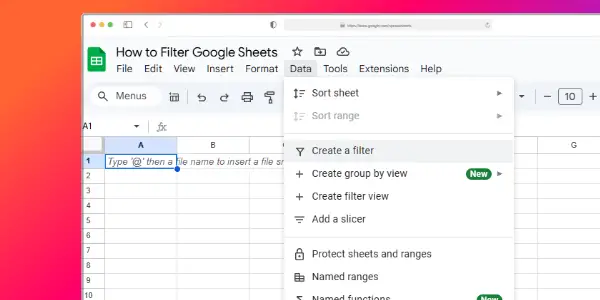Program management is the practice of managing many interrelated projects that are part of a larger organizational effort. It is an umbrella term used to refer to activities that are done to manage multiple projects simultaneously.
Program management involves coordinating the activities of multiple projects while they are in progress in order to ensure that the objectives of the organization are met. It is also used to ensure that the projects are finished on time, within budget, and that the desired results are achieved.
In this article, we will provide an introduction to program management, outlining the key principles and strategies involved:
Definition of Program Management
Program management is the practice of managing multiple related projects and sub-projects with the goal of achieving long-term objectives. It is important to understand that program management usually goes beyond basic project management in order to create alignment among interdependent projects and ensure successful delivery.
Programs are typically large and complex with a variety of stakeholders, dependencies, timelines, budgets and resources. While Program Managers (PMs) need an excellent grasp on project management principles, their expertise focuses on understanding how each project contributes to the goals of the program as a whole—and making sure all those individual efforts work together in successful harmony.
Program Managers coordinate multiple projects within an overarching strategy under one manager or PMO so that executive teams have total visibility over all aspects of their investments. They also have superior conflict resolution and time management skills in order to bridge disconnected teams between departments, geographies or vendors within a project environment.
Benefits of Program Management
Program management provides organizations with the ability to coordinate multiple standalone projects into one, single cohesive plan and project. This allows the focus to remain on both individual projects and the resulting outcomes for the overall program by aligning resources and other professionals who are working together on related activities. Through this approach, executives have a clearer picture of what’s going on with all of their different projects.
The implementation of a program management strategy introduces several important benefits, including:
- Improved efficiency: Having better oversight and plan visibility leads to more efficient use of resources across multiple projects, allowing you to better manage timeline expectations and prioritize tasks that require immediate attention.
- Cost savings: Projects created under a program management approach can lead to significant cost savings when compared to managing those same projects independently.
- Reduced risks: Through the utilization of an interrelated system, risk is managed more effectively by considering how one project could affect another during different stages in the project process.
- Improved quality: The programs receive careful scrutiny at various levels in order to ensure that each element is harmoniously integrated with all other components in order for it to reach its full potential of success.
Program Management Process
Program Management is an important part of project management where the goal is to manage the various aspects of a program. This includes budgeting, scheduling, risk management, resource allocation, and scope management. It is a way of effectively managing all parts of a program in a way that is organized and systemic.
In this article, we’ll look at the program management process and how it helps to ensure the successful execution of a program:
Defining the Program
Defining the program is one of the key steps in program management that requires detailed and comprehensive analysis to ensure success. This stage is critical for defining all aspects for the initiative, including establishing goals and expectations, optimizing program delivery, and managing resources. During this phase, it is also important to create a detailed budget and timeline for the project, as well as define necessary processes.
At this stage it is essential to bring in stakeholders, managers and specialists with relevant skills or knowledge that can help in creating clear objectives. The Program Manager should assemble a team of experts who are willing to contribute towards successful delivery of the program objectives. They should be able to interact with each other through constructive communication ensuring effective engagement throughout this phase.
This process stage includes conducting researched-based studies on related topics that will assist in establishing goals and objectives of the project while also assessing potential risks associated with it. In order to effectively define all aspects of a program before its initiation, certain elements must be established:
- Project Scope required
- Budget & Timeline
- Resource Allocation
- Potential Delays or Risks
- Program Goals & Objectives
- Optimal Success Indicators
Planning the Program
Planning the program, or strategic program planning, is the first stage in the Program Management Process. This involves understanding and assessing the strategy, objectives and goals of a company or organization to see where a new program can be implemented in order to improve cost savings and increase efficiency. During this stage, different goals are identified and prioritized so that all stakeholders understand their importance. Additionally, costs associated with each goal are determined along with return on investment. Finally, the scope of work for each project in the program must be established by clarifying what objectives need to be met within each project as well as how they are related to one another.
The overall success of creating a sound plan depends on taking into account all 5 steps:
- Program definition – Understand what it takes to create a successful program design
- Collection of information – Gather data from stakeholders and analyze it for decision making
- Goals & Objectives identification – Set realistic objectives that will provide competitive advantage to organization
- Design & implementation plan – Construct a tailored approach best suited for projects within your domain
- Measurement & reporting metrics – Establish reporting methods that accurately measure success/failure
Executing the Program
In the executing phase of the program management process, it is important to ensure that all tasks are executed according to the plan and objectives. This phase requires precise monitoring throughout all stages of execution, which includes activity sequencing, resource allocation and task dependencies. All changes during execution must be properly documented in order to ensure the integrity of the program management process.
In order to maximize efficiency, it is important to establish communication among stakeholders during this step, including managing expectations and addressing any potential issues that may arise. It is best practice to review project goals regularly throughout this stage in order to ensure collaboration remains focused on meeting objectives. Progress should be closely monitored with any potential issues being addressed and logged as required.
The executing stage culminates when all tasks have been completed according to the program timeline, budget and agreed standards, allowing resources to be moved onto new assignments and new programs.
Monitoring and Controlling the Program
Successful program management requires monitoring and controlling elements, including tracking and managing risks, resolving conflicts, and negotiating with stakeholders. The overall goal of this phase is to ensure that the program operates within its defined parameters and remains proactive in the face of the ever-changing project environment.
During this phase, the program manager must closely monitor various indicators such as schedule performance, budget performance, risk levels, and resource availability. This data should be collected regularly from all projects within the program as well as from outside sources if necessary. Once data is collected it should be analyzed in order to identify potential problems or existing ones.
The program manager will then institute corrective measures or preventive measures depending on the situation at hand. Control of changes made and their impacts is also an integral component of this phase that must be managed proactively by the program manager in order to ensure smooth delivery of the overall end product. Additionally, resolving conflicts between projects or stakeholders should also be addressed during this phase through clear communication among all involved parties.
Program Management Tools
Program management is an integral part of the project management process that helps ensure the smooth operation of the entire project. It involves the coordination of tasks, resources, budget, and stakeholders. Having the right tools can make the program management process a lot easier.
In this article, we will look at some of the most popular program management tools that can help you streamline the project management process:
Project Management Software
Project management software is used to plan, coordinate and manage resources to achieve specific goals. The tools typically offered by project management software solutions include task lists, document repositories, issue trackers, individual- and team-focused dashboards, workflow tracking capabilities and comprehensive reporting systems.
Program management takes the coordination of teams of people one step further than traditional project management. Instead of focusing on multiple discrete projects at once, expanding from one primary project with a start date and an end date can turn into multiple projects that overarches them all with no pre-determined timeline for completion. Program management offers a strategy for developing the relationships between stakeholders and their progressions through the program in order to ensure successful outcomes across multiple projects with various participants.
When seeking a program management solution to effectively meet organizational needs, look for a tool that specializes in collaborative program creation. This allows users to collaborate alongside other team members on connected projects while allowing each road map of work or tasks associated with the individual members under consideration while keeping tabs on information relevant among all users directly involved in the project.
The right tool should provide end-to-end application development lifecycle capabilities as well as consolidate communication channels and facilitate collaboration among geographically dispersed global teams working across multiple technology domains during long term projects. This includes tracking key milestones such as releases or deployments so that successes are clear and tangible even after months or years of work have been completed on the original agenda.
Establishing this kind of collaborative working environment fosters effective program delivery while also providing accurate reporting features crucial documents like budget projections using data from actual hourly rates charged by team members in order to adhere to budgetary controls when managing cost centers is paramount for successful program delivery without fail!
Communication Tools
In any large scale program or project there are often many stakeholders and team members that need to be kept informed of progress, changes, and updates. To ensure team collaboration and efficient workflow, effective communication tools must be utilized to ensure all parties can connect in an organized and timely manner.
Common program management communication tools include:
- Email programs,
- project management boards,
- instant messaging apps such as Slack,
- text-messaging programs like WhatsApp or Signal,
- teleconferencing software such as Zoom or Google Hangouts Meet,
- whiteboarding platforms like Miro or Aww App, and
- cloud storage tools such as Dropbox or Box.
Email programs are a popular choice for disseminating information quickly and efficiently to a large team. Threaded conversations allow teams to discuss topics together in one place.
Project management boards are also popular choices for tracking work items across the board while visualizing areas of progress and where they might be falling short of goals being tracked through ongoing sprint cycles.
Instant messaging apps allow teams to communicate in realtime without the need for video conferencing, while text-messaging apps provide an opportunity for individual conversations.
Teleconferencing software grants teams the opportunity to meet both virtually or over the phone with wider distribution lists than those typically associated with video calls.
Whiteboarding platforms offer an interactive whiteboard space that allows multiple people to collaborate on projects simultaneously with realtime updates whenever something is changed.
Cloud storage tools give teams dedicated space for sharing documents and content that is always accessible from anywhere.
Risk Management Tools
Risk management tools form an essential part of program management. Risk management is the task of identifying, monitoring and managing potential risks that may arise in a project or program from a variety of sources. It is important to be aware that risk management tools need to be used in conjunction with proactive strategies and best practices that can help reduce potential risks throughout the project or program.
There are several risk management tools available and they can be divided into four main categories: identification, analysis and evaluation, planning, and monitoring. Identification is where potential projects and programs are analysed to identify which have a higher risk factor associated with them.
This includes looking at factors such as timeframes, external dependencies, financial costs etc. Analysis and evaluation aims to assess the impact each of these risks may have on the project or program and therefore determine more accurate control measures, while planning involves developing effective strategies for avoiding or mitigating any identified risks.
Finally, monitoring entails keeping track of various activities throughout the life cycle of a project or program to ensure the effectiveness of any preventative measures put in place for managing risks.
From decision trees to cost benefit analyses and Monte Carlo simulations there are numerous different methodologies used for risk management tools which provide helpful insights towards understanding how particular decisions will affect factors such as time taken or project costs associated with undertaking specific tasks during a project or program life cycle.
By using these risk management tools, organizations can ensure they plan projects with more success rate which helps reduce uncertainties while achieving objectives on time at minimal costs possible.
Best Practices for Program Management
Program management is fundamental for success in project management because it provides structure to projects and clear roles and responsibilities for all involved in a project. It is important for any project manager to be familiar with the best practices for program management to ensure all projects are conducted effectively and efficiently.
In this article, we’ll discuss the best practices for program management:
Establish Clear Objectives
The importance of establishing clear objectives for a program cannot be overstated; this step is the cornerstone of successful program management. Without well-defined aims, it is impossible to maintain focus on the most important components of a project and allocate resources appropriately.
Goals should be SMART – Specific, Measurable, Achievable, Relevant, and Timely. Additionally, it is essential to consider stakeholder needs and expectations when creating objectives as they need to have visibility into the outcome as it will affect them too.
Objectives should be divided into both long-term and short-term goals with detailed timelines for completion and checkpoints along the way so that progress can be monitored. It also helps to create subevents or tasks which ensure that each component of the objective has been fulfilled as planned. This helps identify areas of challenge where corrective action may be needed or additional resources may need to be allocated in order to get back on track towards successful completion of objectives within set timelines and budgets.
Define Roles and Responsibilities
Defining roles and responsibilities is a critical component of successful program management. Different roles often overlap or may not be defined specifically, so it’s important to identify these roles and how they interact with one another. Creating an effective program management team starts by establishing who is responsible for what.
Roles can include Program Manager, Program Director, Project Manager, Developers, Test Engineers, Business Analysts, Subject Matter Experts and other stakeholders. Each role should have a clearly defined set of responsibilities to ensure the successful delivery of the project. It’s also important to define the respective relationships between roles so that everyone knows their place in the overall organization.
Another vital component for defining roles and responsibilities is the establishment of project milestones and deliverables. Milestones can help to determine progress points throughout the project and allow team members to measure success against predetermined goals or targets. Through clear understanding of obligations within each role as well as milestones that need to be achieved, program managers can help ensure efficient coordination between teams while managing expectations among stakeholders effectively.
Manage Stakeholder Expectations
Managing stakeholder expectations is an important part of program management. Program managers must ensure that stakeholders know exactly what is expected from them throughout the life-cycle of the program, including when and how they should provide feedback. This can help to build trust between stakeholders and the program manager, while at the same time providing a clear understanding of what is needed to bring the project to successful completion.
Stakeholders should be made aware of clearly defined objectives and expectations before their involvement in any aspect of the project begins; this will give them the information they need to supply successful feedback during key points in the process. It is also beneficial for a program manager to use sound communication strategies such as holding regular meetings or providing progress reports to ensure everyone remains on track. Holding regular reviews with stakeholders should be used at key intervals during the program’s lifespan as well – these reviews are vital in helping both parties understand their roles and responsibilities related to a successful outcome.
Furthermore, program managers must take care not to overpromise or set unrealistic expectations when communicating with stakeholders; being upfront about challenges, addressing risks proactively, and keeping communication open are all important considerations when managing stakeholder expectations throughout the course of a program.
Conclusion
Program management is a form of project management that focuses on the coordination of projects and activities in a larger scope. It is used to help streamline complex projects that require multiple teams and resources. Program management is a critical tool for organizations to ensure the successful implementation of their project goals and objectives.
In this article, we have discussed the various advantages and disadvantages of using program management in project management. Now, let’s conclude our discussion.
Summary of Program Management
Program management is a tool used to manage projects, initiatives and activities that need to be completed in order to reach an organization’s goals. Program management is often used when multiple projects need to fall within the same time frame, have the same goal, require similar resources and/or when multiple projects have overlapping parts.
Program managers are tasked with developing plans and budgets, obtaining necessary resources, monitoring progress, adjusting schedules as needed and coordinating efforts with stakeholders across all levels of an organization. They ensure team members are on task, address risks with strategic solutions and collaborate with other business functions to facilitate success.
By overseeing the entire program’s progress in an effort to uncover any conflicts or delays in time or budget while adhering to quality standards and customer requirements and collecting relevant data, program managers are able to keep projects moving forward towards completing your objectives on schedule. Ultimately optimizing resource utilization for maximum return on investment (ROI).
:How Can Program Management Help Implement Change Management Workshops?
Program management can greatly benefit the implementation of running change management workshops. By coordinating various projects and resources, program management ensures that change initiatives are aligned with organizational goals, leading to effective and successful workshops. This approach also helps in identifying potential roadblocks and addressing them proactively.
Frequently Asked Questions
Question 1: What is program management?
Answer 1: Program management is a discipline that involves managing multiple related projects, often with the intention of improving an organization’s performance. Program managers lead interdisciplinary teams to complete projects that are often complex, large-scale, and require significant resources.
Question 2: What is the purpose of program management in project management?
Answer 2: Program management serves as the bridge between strategy and execution. It aligns strategic objectives with project execution to ensure that all projects are completed on time, within scope, and within budget. It also helps to identify any areas of overlap or duplication of effort, and helps to ensure that the organization is utilizing its resources effectively.
Question 3: What skills are needed for program management?
Answer 3: Program managers need to have strong leadership, organizational, and communication skills. They also need to have a deep understanding of project management principles, including project scope, budgeting, scheduling, and risk management. Additionally, program managers need to be adept at problem-solving and be able to think strategically in order to successfully manage multiple projects.





